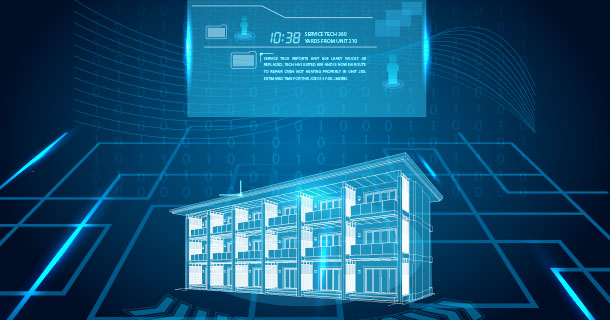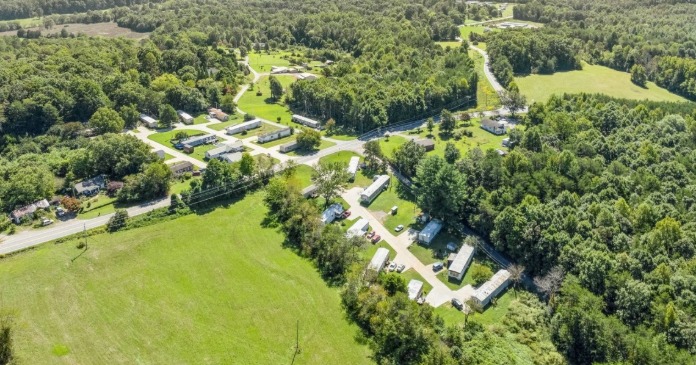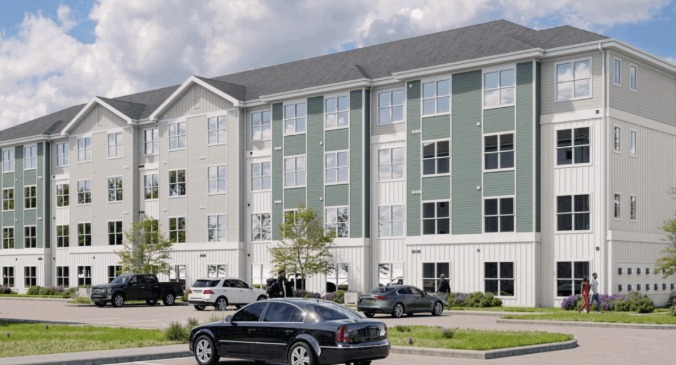On a year-over-year basis, the REIT saw reductions in spending on apartment community upkeep of 4.1 percent in Q1, 11.7 percent in Q2 and another 5.2 percent in Q3, ending the year with repairs and maintenance expenses down 4 percent from 2012, thanks to a program that was initiated a couple of years ago when UDR execs came to the realization that maintenance for the 50,000 apartments in the 41-year-old company’s coast-to-coast portfolio was being conducted much like it was 20 or 25 years earlier.
“We had advances in the way we ran our office, ran our sales, ran our marketing—through technology and other improvements—but the way maintenance worked was very similar” to how it was done years ago, UDR Chief Operating Officer Jerry Davis explained in mid-December.
So, his team took a really deep look at how the service side was run and where it could be made more efficient. “The goal was not that, as they became more efficient, we would downsize our workforce, but to make them more efficient so we could bring third-party costs in-house,” he said.
Most apartment operators employ one maintenance worker for every 100 apartments, he said. “It takes that many just to keep the store open and have adequate coverage, given the number of days a week you have guys work. It’s hard at a normal 300-unit property, even if we get more efficient, to reduce it to two, because you won’t have enough guys to cover every day you need work.”
And, they were cognizant of the need to assure the service workers that increased efficiency wouldn’t lead to job loss, but would free up UDR’s service workers to take on some of the jobs previously performed by outside contractors, like painting, light cleaning and carpet cleaning, at significant savings. And, at larger properties, a dedicated person proficient in plumbing and heating and air-conditioning repair could do those jobs at far below third-party costs.
Outside labor generally bills at $40 to $50 an hour and the typical UDR maintenance worker makes around $15 or $20 an hour or $20 to $25 an hour when you throw in benefits, so, on an apples-to-apples basis, UDR was able to cut those costs by about 50 percent by doing the work in-house.
“So, that was the end goal—to make guys efficient so we could bring third-party costs in-house and also to make guys more efficient so we could do more for our residents, whether it was to make the property cleaner and better or do more in preventive maintenance, so they never have things break in their apartments,” which enhances resident retention, said Davis.
How did they accomplish those two goals? They started by asking questions throughout the organization and came to the realization that a typical maintenance person had more than three hours of downtime or non-productive time every day, time that was spent mostly walking from place to place.
“Because they didn’t have electronics or tools with them like a handheld device, they’d have to go back into the office to get the service request or work order to find out where they were supposed to go next. And they had to come back and forth to the office every time they had to punch in and out for a break or for lunch. They had to go back and forth to the maintenance shop frequently to get parts and they had to come back and forth to the office to get keys to go into somebody’s home, if they had a service request, so they were just walking around a lot.” Davis explained.
“If you ever went out to a property, you’d see these guys walking around a lot and you might think, ‘Wow, they’re working hard,’ but it dawned on us that they were working unproductively,” he said.
“We had a lot of talks and we had studies from other industries like UPS, which several years ago was able to make delivery drivers more efficient by eliminating left-hand turns, so they were never waiting on traffic and, by the end of the day, maybe it would cut off 15 to 20 minutes of total waiting time just through logistics.”
So UDR conducted a companywide contest asking the maintenance workers to design carts—maid carts for high rises and golf carts for the maintenance workers at garden communities—that would function as kind of a mobile shop stocked with the 30 most commonly needed parts for maintenance. That project took around six months. The carts were deployed beginning in late 2012 through the first half of 2013 with very successful results.
“It’s worked to let these guys have a fully stocked cart that they insure is complete at the beginning of each day and, instead of having to go back and forth to the maintenance shop 10 to 15 times a day, they may only have to go one or two times,” said Davis, adding that the savings are huge and the solution required no technology.
Technology came into play in the effort to better manage maintenance workers’ break time. In most states, hourly workers must clock in and clock out for two breaks and one lunch a day and, if that doesn’t happen, manual adjustments must be made at the end of the day, which can cause a lot of problems, he said, adding that, in some states, if an hourly employee misses a break, the company has to pay penalties.
The solution was to put timekeeping software on the handheld devices the workers now carry with them during the work day so, instead of requiring a service employee who was way off in one corner of a 40-acre property, for example, to walk or drive 10 or 15 minutes to the main office to punch out, sit there for a 15-minute break and then go all the way back, which turns a 15-minute break into a 45-minute break, the worker can just clock out wherever he is, take a break and then clock back in, another mega-money-saver.
“The second thing we’re able to do with that handheld device is the service manager at a property now can send a service request electronically to any technician that he thinks is capable of doing the work,” he said.
So, if a scheduler knows, for example, that a particular maintenance person is working in the northwest corner of the property and a new service request comes in, the service manager can allocate that service request to that worker, who could do it while he’s in that area, instead of coming all the way back to the office to see what the service request is and then walking or driving back out to the site.
What Davis hopes to do in time—although the company is not there yet—is get to the point where the system will automatically read the service worker’s location at any time through a GPS device.
Using as an example a fictional service worker named Andrew, Davis explained, “My system will automatically read where all of my guys are and it will automatically, without any human intervention, send the service request to Andrew.
“But, the other thing we’d have to do is input into the system what skills Andrew does have because, if it’s a heating or air conditioning request and Andrew’s not capable of fixing that, I wouldn’t schedule that for him. I would do it for somebody else that’s close by that has that skill set. We’re not at that point, yet, but we see those as further advancements we’re going to be able to make,” he said.
The other aspect of improving the efficiency of service workers is taking another look at labor standards—a tool used by many in the apartment industry to measure employee performance and skills.
Davis said a lot of people in the multifamily business judge an employee’s productivity by the number of service requests completed in a given day.
“Let’s say Andrew and I both worked for you and Andrew did four and I completed 12, and that’s all you know. At the end of the day, you’re going to think I did a good job and Andrew did not. But, if Andrew did all of the difficult service requests that should take two-and-a-half hours each, he really did 10 hours of work in an eight-hour day and I may have cherry-picked and done all the easy ones that should take 15 minutes each. I actually did three hours of work,” he said.
So, the company reviewed the major service requests, property by property, and created labor standards that enable better evaluation of employee performance, based on the amount of time spent on each job, not the number of jobs done in a day.
“In the situation I just gave, if Andrew did 10 hours of work in an eight-hour day, his productivity score would have been 125 percent and mine would have been 37 percent,” he said, adding that his team has been refining those labor standards for the past year and isn’t quite finished. But, what they hope to be able to do, starting next year, is financially reward out-performers and assess how best to get under-performers up to speed.
In the past, Davis continued, a service worker might think, “I’ve got two hours and nothing going on this afternoon, so I’m going to take my time doing this job.”
“But, what we want them to do is be as efficient as they can so that we can reload that extra time with third-party work and drive our costs down. We’re not at that point, yet, and I don’t think we’ll get there until sometime later in the first quarter of 2014, when I can truly use those labor standards as management and incentive tools, but we’re getting close,” he said.
Another efficiency measure, which UDR rolled out in October, is a preventive maintenance program.
“We went back and looked at what were the most common seven to 10 service requests companywide. Things like ‘My garbage disposal doesn’t work. I have lights that are out. My toilet runs. My shower doesn’t drain quickly.’ Those are all really easy fixes that individually would, once my guy is in the apartment, hopefully take five minutes to fix,” he said.
By scheduling one building at a time for preventive maintenance and spending six or seven dollars per unit for the parts needed to keep things working, UDR can avoid wasting service workers’ time and residents are happier because a shower drain stays clear and toilets don’t run continuously.
Another big source of resident displeasure is having a smoke alarm go off in the middle of the night because the battery needs replacement.
“You call my guy and he comes out and puts a $1.20 battery in there. Those batteries typically last a year-and-a-half, but, if we just get on a cycle where we replace them every year, I don’t care that I’m throwing away 30 cents more of life on that battery,” he said, explaining that an unscheduled replacement takes some 15 to 20 minutes of a service worker’s time, costs the company $10 or $15 for labor and upsets the resident, who lost sleep because of the beeping.
And those preventive maintenance chores can be done during the slow leasing time from November until February, evening out the workload over the year.
“We’re in our first season, right now, of that preventive maintenance program and we’re really going to be watching that over the next year to see two things—number one, did it help me with resident retention and, number two, did it drive down service requests compared to last year because I’ve done it preventively?” Davis said at the end of Q3.
During February’s Q4 2013 earnings conference call, he predicted the efficiency push in the repairs and maintenance arena will continue to reduce costs going forward. Absent the R&M cost-reduction program, that line item likely would have increased around 3 percent year-over-year. Instead, it was down 4 percent, he said.
“It’s enabled us to cut those costs by about 7 percent. We expect this year to have comparable results—and we think we can play this out for a few more years, with probably the final piece of this coming a couple of years down the road with electronic locks that we think will be an amenity to our residents, as well as making our people more efficient,” Davis said.














